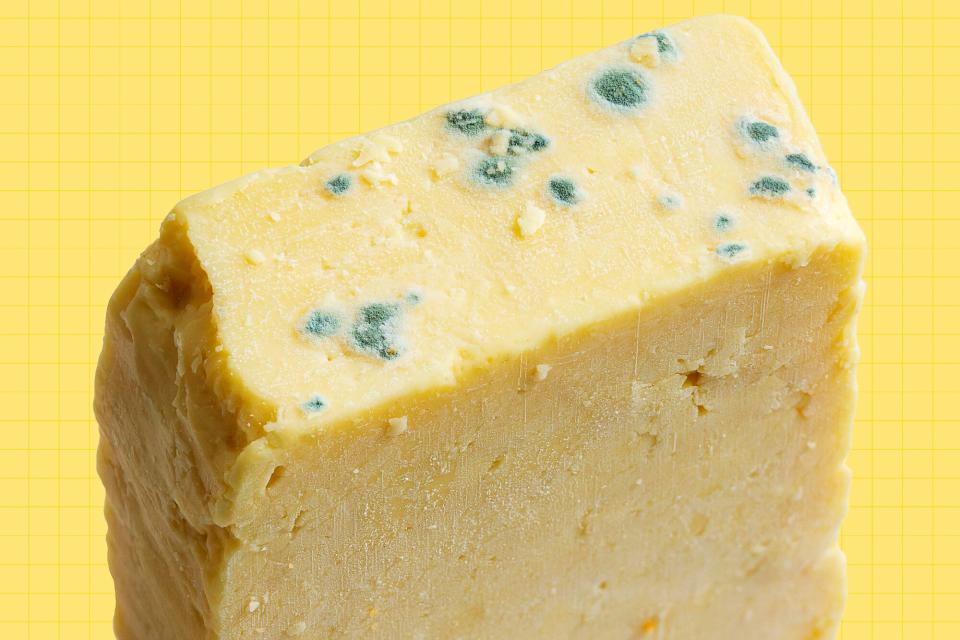Can You Eat Cheese If It Has Mold on It?
Cheese is, and I do not think I am exaggerating here, perhaps the highest form of food milk can aspire to. The hundreds of varieties mean there is likely a cheese for nearly every palate, and almost all cultures around the world with access to milk have created their own versions—from soft fresh cheeses you can eat the day they are made to cheeses aged so long they could vote in the next election. These days, even the most basic grocery store has a decent stash of slabs and wedges to choose from, and if you are anything like me, it is easy to overbuy. It is also easy to forget about a cheese you have already opened and unwrap a new one. Which means, inevitably, we are faced with a moldy cheese. Which begs the question, is moldy cheese salvageable, and how do I know?
Related: Is It Safe to Eat Sprouted Garlic?
Good mold vs. bad mold
In some ways, all cheese is, in and of itself, mold. And many of the molds involved in cheesemaking are great. That thick coating of white mold on soft-rind cheeses like Brie or Camembert, or the blue veins in your favorite Gorgonzola. And frankly, none of the molds that are likely to grow on your cheeses will make you ill. But they will potentially affect the flavor of your cheese, and not in a good way. So, it is important to know how to handle the mold on your cheeses to ensure you don't waste any delicious morsels.
Related: Cheesy Spinach-Zucchini Lasagna
What should I do with moldy cheese?
Assess the mold situation first by type of cheese. Any fresh soft cheese—ricotta, mascarpone, chèvre and the like—should just be discarded, since the damp environment means that the mold has likely penetrated deep into the cheese and, while not toxic, will have negatively impacted the flavor. Soft cheeses like Brie or Port-Salut should have about a quarter-inch cut away from any surface where mold is visible. Harder, aged cheeses, like aged Cheddar or Parmesan can just have the mold scraped away. With white, fuzzy mold, tinged with green, the flavor effect is minimal and the mold can be safely cut away without incident. Black or gray mold is less desirable, and you should cut away more of it to remove any cheese that might be impacted. Any moldy cheese that smells of ammonia or is both moldy and wet should be discarded.

Getty Images / Russell102
Related: Is It Safe to Eat Ground Beef That's Turned Gray?
What if I ate moldy cheese?
You ate cheese, so you were eating mold anyway. There is no need to panic, unless you ate a whole wedge of cheese thickly coated in green fur (and if so, you have other issues you might want to explore), you are very unlikely to get sick from cheese with a little mold on it. Your stomach acid is some powerful stuff and will kill the spores in the mold before you would feel any impact.
Related: Cheesy Beef Enchilada Casserole
How can I prevent cheese from molding?
Storing cheeses properly and eating them within a reasonable time frame is the best way to prevent cheese from molding. To store cheese, wrap in special cheese paper, or in a layer of parchment paper. Label with the type of cheese and the day you bought it. Store in your crisper drawer, which will have consistent temperature and humidity. If you have a dedicated wine fridge, you can store cheese in there, where the temps are less cold, which is actually better for the cheese.
Related: Is It Safe to Eat an Onion That Has a Brown Ring?
What cheeses are least likely to mold?
Want to avoid the mold issue as much as possible? Stick with long-aged, hard cheeses like Parmesan, pecorino, older Cheddars, aged Gouda and the like. Cheeses that age for 18 months or longer are least likely to mold on you.
Related: 5 Reasons Cheese Is Actually Good for Your Health
Bottom line
Whichever cheeses you love most, buy them fresh, store them properly, and don't get worried about a little bit of mold. After all, in the cheese world, sometimes the mold is the most delicious part!
Related: Healthy Cheese Recipes

